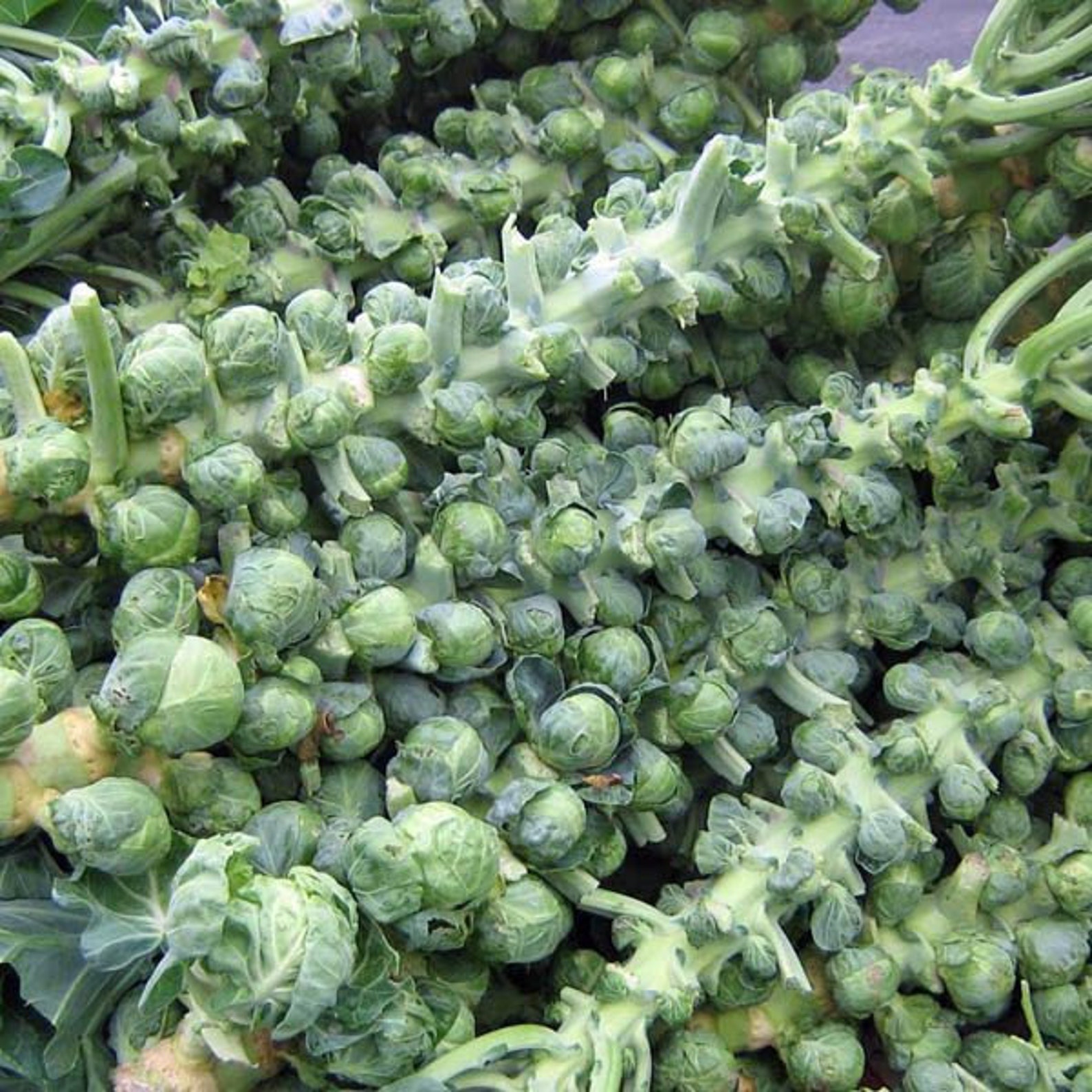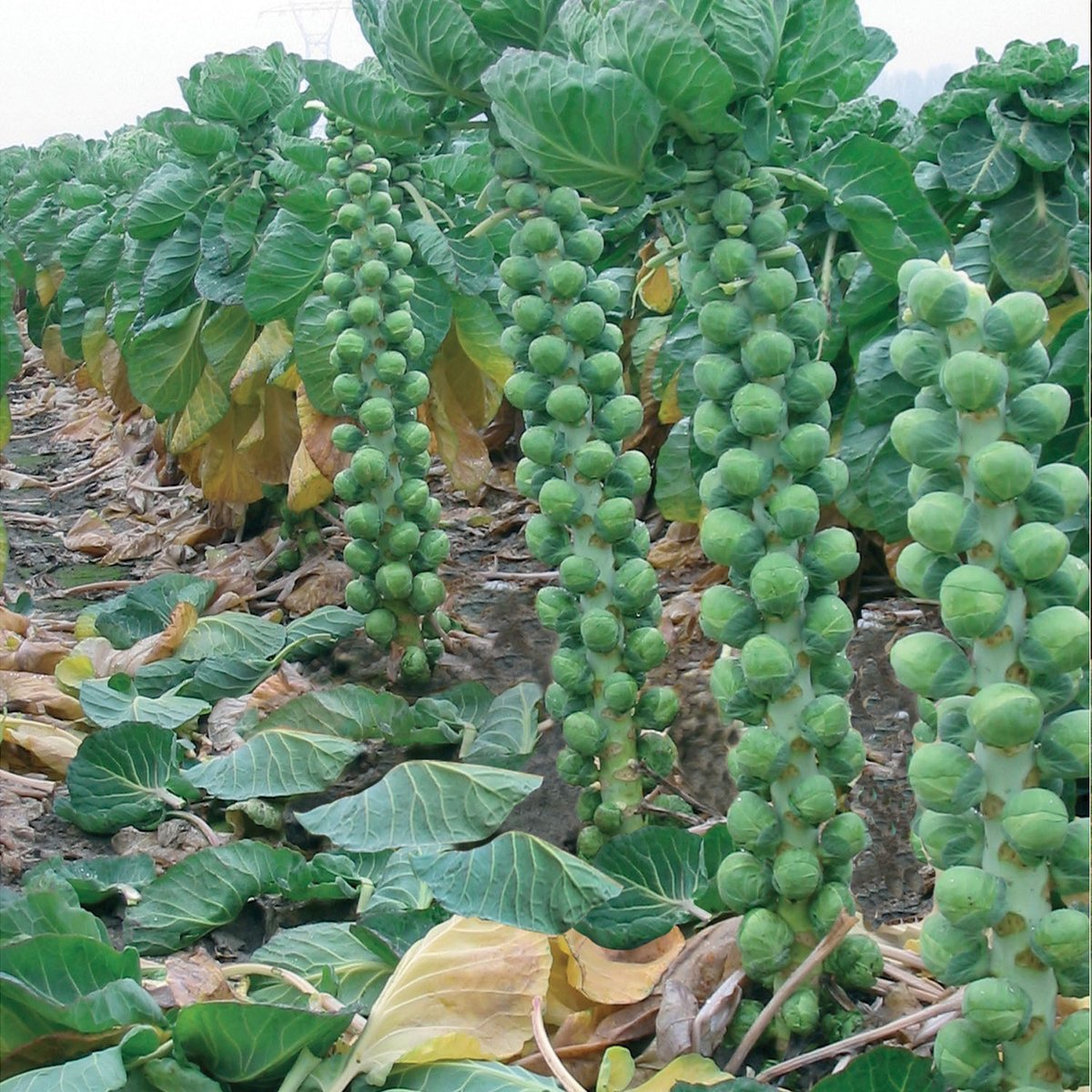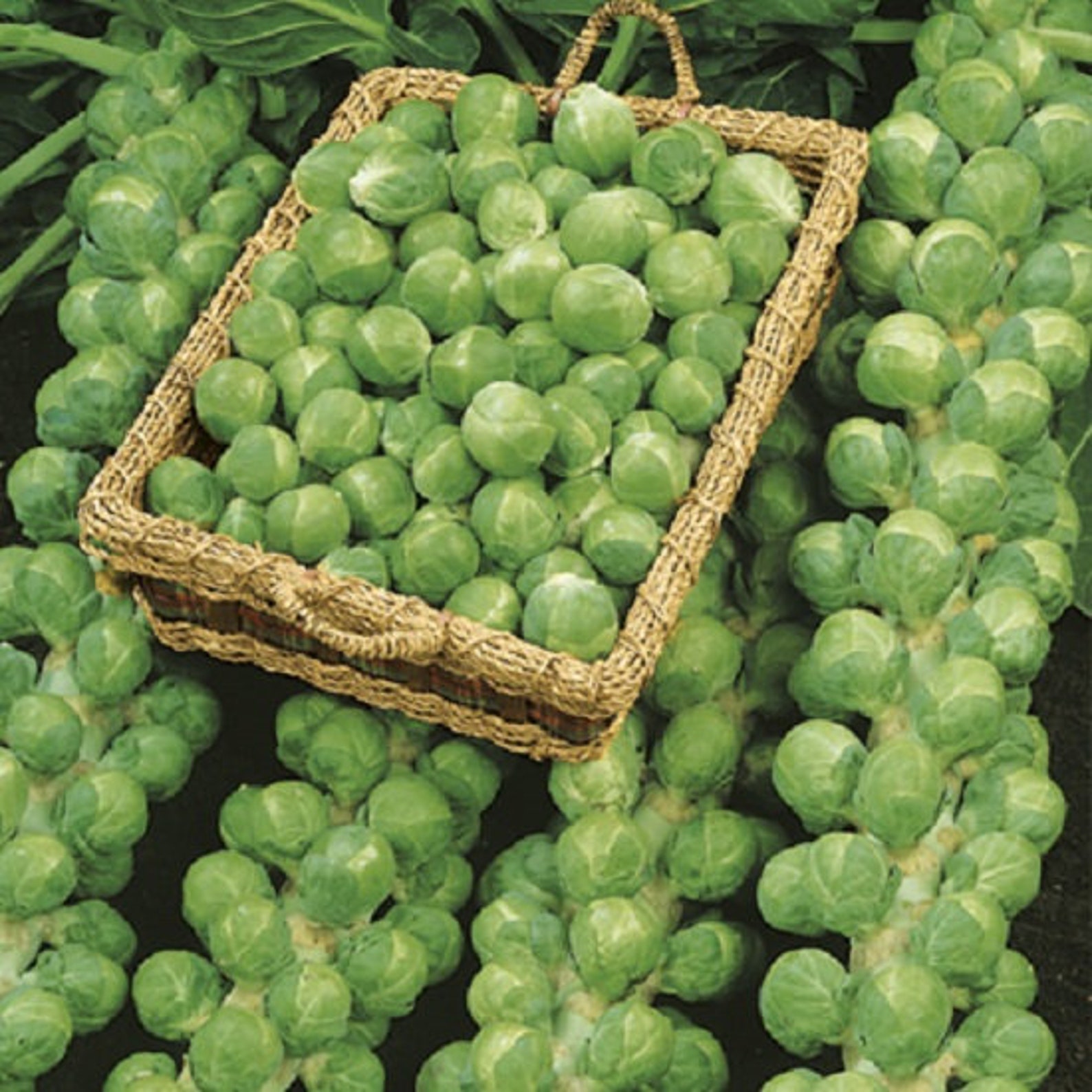

Brussels sprouts belong to the Cole Crop family and grow throughout a long season with a fall harvest.

Well, it would appear they were first cultivated in Brussels in Belgium as long ago as the 1760s.A beginning species of Brussels sprouts actually originated in Ancient Rome, and small, cabbage-like vegetable was brought to America in the 1800s. And don’t forget you can eat the sprout tops too. These will then be ready to harvest between December and March. You can freeze your sprouts but if you want to harvest your Brussels sprouts so they are as fresh as they possibly can be for Christmas day, you can sow late varieties outdoors in April and transplant out in June. Some varieties, particularly the older ones, benefit and gain flavour from exposure to the frost and to encourage the final sprouts to open, remove the sprout tops.Tug them down and then snap, off they come but the lowest will mature first so avoid picking them all at once.When picking, start with the lowest sprouts and make sure they are tightly closed and about 2 cm wide.


Before and after planting, don’t forget to water your sprouts and if you have a period of dry weather, then make sure you water them again.And remember they need firm planting in, in order to grow well. When planting out, leave about 60cm between plants and 75cm between rows (depending on the variety ~ you should find all the information on the seed packet), because they need the space to thrive. They like a sheltered, sunny spot, protected from winds and you’ll probably need to add more well-rotted manure or other general-purpose fertiliser. From mid-May to early June, when the Brussels sprouts are about 10-15cm high you can transplant them outdoors.Make sure you keep the seedbed moist, not saturated and when the Brussels sprout plants are about 2.5cm tall, thin the seedlings to roughly 7.5cm apart. Cover the seeds with soil, lightly firming them in. It's best to plant brussels sprouts as seeds from early March to April, sowing your sprouts in a cold frame or under a fleece, 13mm deep in rows 15cm apart. You want to aim for a pH of 7 or more and if it is lower than 6 you’ll need to add lime. A month or so before you want to plant, remember to check the pH of your soil.Dig over and dig in plenty of well-rotted compost or manure to give your soil maximum time to settle in and make sure your beds are well-drained. Sprouts like a firm, neutral or alkaline soil so the first thing to do if you’re planning to grow sprouts is to prepare your bed well in advance.If this year’s supermarket Brussels sprouts have left you feeling a little cold, then start planning your own crop for next year. A badly grown sprout is not a thing of pleasure but with the firm, fertile soil and a bit of love, you can grow delicious, crispy sprouts to be proud of and there really is no better tasting Brussels sprouts than the homegrown! Love them or hate them, Brussels sprouts are a great winter vegetable, high in vitamin C and which can help to lower cholesterol.īrussels sprouts are part of the cabbage family, if you don’t like them, it may well be because they’ve been overcooked or worst still, grown in poor soil in bad sprout conditions.


 0 kommentar(er)
0 kommentar(er)
